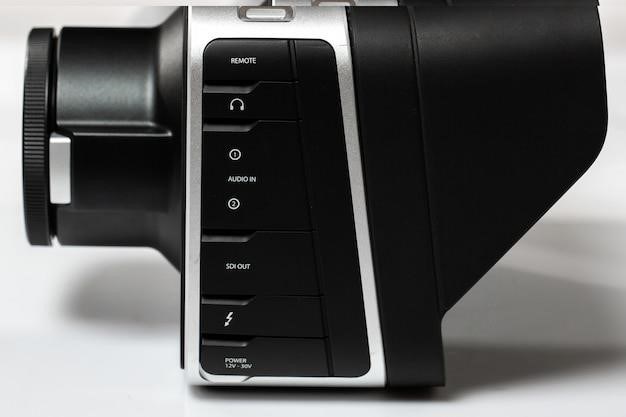

Nikon D810 Manual⁚ A Comprehensive Guide
This guide provides a roadmap to mastering your Nikon D810‚ exploring its features beyond the standard user manual. Discover shooting modes‚ metering‚ autofocus‚ and advanced techniques for optimal image creation. Troubleshooting tips and links to third-party resources are also included.
Accessing the Nikon D810 Manual
Locating your Nikon D810’s manual can be achieved through several avenues. The primary source is Nikon’s official website‚ where you can download a digital copy in PDF format. This ensures you have the most up-to-date version with the latest firmware information and any important updates or corrections. Navigation on the website might require searching for “Nikon D810 manual” or “Nikon D810 user guide‚” leading you to a download page with terms and conditions for acceptance before initiating the download process. Remember that a stable internet connection is essential for successful downloading and viewing of the extensive PDF manual. The size of the file can be substantial‚ so ensure sufficient storage space on your device. Alternatively‚ you may find the physical manual included with your camera purchase; if so‚ it’s crucial to keep it in a safe place for future reference. Consider storing it in a protective sleeve to avoid damage from moisture or accidental spills. This physical manual can be particularly helpful if you prefer a hands-on approach to learning your camera’s functionalities. Remember to check the manual’s copyright information‚ and always abide by any restrictions on copying or distribution.
Downloading the Official Nikon D810 User Manual
Downloading the official Nikon D810 user manual is straightforward. Begin by navigating to Nikon’s support website. A search for “Nikon D810 manual” or a similar term should quickly yield the appropriate results. The download page will likely present the manual in PDF format‚ a widely compatible document type for easy viewing on various devices including computers‚ tablets‚ and smartphones. Before downloading‚ carefully read the terms and conditions; these agreements outline acceptable uses and restrictions on distribution or modification of the content. Once accepted‚ the download will commence; the file size is substantial‚ so ensure a reliable internet connection and sufficient storage space on your chosen device. Following the download‚ open the PDF file using a suitable PDF reader. Most modern operating systems include built-in PDF viewers‚ but dedicated PDF readers often offer enhanced functionality like bookmarking‚ searching‚ and annotation tools. Organize your downloaded manuals; creating a dedicated folder for camera manuals helps maintain order and allows for easy retrieval when needed. Remember to regularly check the Nikon website for updated versions of the manual as firmware updates or corrections may be released over time.
Alternative Sources for the Nikon D810 Manual
While the official Nikon website is the primary source‚ alternative avenues exist for accessing the Nikon D810 manual. Online retailers such as Amazon often provide downloadable manuals alongside product listings; check the product page for a “manual” or “specifications” link. Third-party websites specializing in camera manuals and user guides may also host the document; however‚ exercise caution when using unofficial sources to ensure the document’s authenticity and avoid malware. User forums and photography communities can be valuable resources; members might share links to manuals or offer assistance in locating them. Be wary of unofficial websites or links offering the manual for download‚ as they might contain viruses or malware. Always verify the source’s legitimacy before proceeding. Consider the Nikon Manual Viewer 2 application‚ available on app stores for mobile devices; this app provides access to various Nikon manuals‚ including the D810’s‚ offering a convenient mobile viewing option. Remember to check the file’s integrity and source before downloading from any unofficial location to avoid potential security risks. Always prioritize downloading from trusted and verified sources to ensure a safe and reliable experience. Prioritize official sources for accuracy and to avoid potential issues with incomplete or incorrect information.
Nikon Manual Viewer 2 Application
Nikon’s Manual Viewer 2 application offers a convenient way to access the D810 manual and other Nikon camera manuals digitally. Available for free download on both the App Store and Google Play‚ this application allows users to view the manual on their smartphones or tablets. This eliminates the need for a physical copy‚ providing readily available information wherever you are. The app provides a searchable interface‚ making it easy to find specific information within the extensive manual. Navigation through the manual is simplified with intuitive controls‚ allowing for quick access to different sections and chapters. The app usually supports multiple languages; check the available options upon installation to ensure your preferred language is supported. While offering convenience‚ remember an internet connection is usually needed to download the manuals and potentially for certain features within the app. Keep in mind that updates to the app or the manuals themselves might require an internet connection for seamless use. This offers a great alternative to carrying a physical manual‚ especially for photographers who prefer digital resources. However‚ ensure your device has sufficient storage space before downloading the D810 manual through the app. The app’s availability and features might vary slightly depending on your device and operating system.

Understanding Key Features of the Nikon D810
The Nikon D810 boasts a full-frame 36.3MP CMOS sensor‚ renowned for its exceptional image quality and detail. Its high resolution excels in capturing landscapes‚ portraits‚ and other scenes demanding fine detail. The camera’s robust build and weather sealing ensure durability in various shooting conditions. Its EXPEED 4 image processor ensures fast processing speeds and high-quality images with minimal noise‚ even at high ISO settings. The D810 offers a wide range of ISO settings‚ from 64 to 12800‚ expandable to 32-51200‚ providing flexibility in diverse lighting situations. A key feature is its impressive autofocus system‚ with 51 autofocus points‚ 15 of which are cross-type sensors‚ providing accurate and fast focusing. The D810’s 1080p video recording capabilities are also noteworthy‚ allowing for the capture of high-definition video footage. Its versatile metering system‚ including matrix‚ center-weighted‚ and spot metering‚ aids in achieving accurate exposure. The camera’s robust build and extensive features make it a suitable choice for professional and serious amateur photographers alike. Understanding these key features will enable you to unlock the full potential of your Nikon D810.
Exploring Shooting Modes and Settings
The Nikon D810 offers a variety of shooting modes to suit different photographic needs and skill levels. Understanding these modes is crucial for achieving desired results. Auto mode simplifies photography‚ automatically adjusting settings for optimal exposure. Aperture Priority (A) allows control over depth of field‚ while Shutter Priority (S) manages motion blur. Manual (M) mode provides complete control over aperture‚ shutter speed‚ and ISO‚ ideal for experienced photographers. Program (P) mode offers automated settings with creative adjustments. Scene modes cater to specific photographic situations like portraits‚ landscapes‚ and sports. Beyond shooting modes‚ the D810 offers extensive customization options. White balance settings adjust color temperature for accurate color reproduction under various lighting conditions. Picture controls allow for adjustments to image sharpness‚ contrast‚ saturation‚ and hue. ISO sensitivity determines the camera’s sensitivity to light‚ impacting image noise and exposure. Mastering these settings allows photographers to tailor their images to their creative vision and specific shooting scenarios. Experimentation and practice are key to understanding the interplay between these settings and achieving the desired photographic outcome.
Mastering Metering and Autofocus
Accurate exposure and sharp focus are fundamental to successful photography. The Nikon D810 offers several metering modes to determine the appropriate exposure settings. Matrix metering analyzes the entire scene‚ providing balanced exposure in various situations. Center-weighted metering prioritizes the center of the frame‚ useful for portraits or subjects positioned centrally. Spot metering measures light from a small area‚ ideal for precise exposure control in high-contrast scenes. Understanding the strengths and weaknesses of each metering mode is crucial for achieving consistent and accurate exposures. The D810’s autofocus system is equally important. It employs a sophisticated multi-area autofocus system with various focusing points‚ offering flexibility in diverse shooting scenarios. Single-point AF focuses on a selected point‚ ideal for static subjects. Dynamic-area AF expands the focusing area‚ useful for moving subjects. Group-area AF selects multiple focus points‚ effective for subjects within a defined area. Auto-area AF automatically selects the focus point based on scene analysis. Customizing autofocus settings‚ such as selecting AF-area modes and fine-tuning AF sensitivity‚ enhances focusing accuracy and speed. Mastering these settings is crucial for consistently capturing sharp‚ well-exposed images.
Advanced Techniques and Settings
Beyond basic shooting modes‚ the Nikon D810 unlocks advanced photographic capabilities. Explore Picture Controls to fine-tune image parameters like sharpness‚ contrast‚ and saturation‚ tailoring the look of your images to your creative vision. Experiment with Active D-Lighting to recover detail in highlights and shadows‚ particularly beneficial in high-contrast scenes. Mastering HDR (High Dynamic Range) shooting allows you to combine multiple exposures to expand the dynamic range of your images‚ capturing detail across a wider range of brightness levels. Utilize the D810’s extensive white balance options to achieve accurate color rendition under various lighting conditions. Fine-tune white balance settings for precise color control‚ compensating for artificial light sources or unusual color casts. The D810’s extensive menu system allows customizing various settings‚ including image quality‚ file formats (RAW‚ JPEG‚ or both)‚ and noise reduction options. Understanding these advanced settings enables greater creative control and allows photographers to fine-tune their images to perfection‚ resulting in professional-quality photographs. The ability to adjust these parameters based on individual shooting situations is critical for capturing optimal images.
Troubleshooting and Common Issues
This section addresses common Nikon D810 issues and provides solutions. Addressing blurry images often involves checking focus settings‚ ensuring sufficient light‚ and using a stable tripod. Understanding the camera’s autofocus system is crucial; experimenting with different autofocus modes (single-point‚ dynamic-area‚ group-area) helps achieve sharp focus. Slow shutter speeds can lead to motion blur; use a faster shutter speed or a tripod for sharp results. Addressing issues with image quality often involves reviewing settings like image size‚ compression‚ and Picture Control settings. If images appear underexposed or overexposed‚ adjust exposure compensation or shoot in manual mode for precise control over aperture‚ shutter speed‚ and ISO. Dealing with unexpected error messages requires consulting the official Nikon D810 manual for specific error codes and troubleshooting steps. Cleaning the camera sensor is crucial to prevent dust spots appearing on your images; use a sensor cleaning kit or seek professional cleaning services. Battery life issues may require replacing the battery or optimizing camera settings to conserve power. Understanding these common problems and their solutions ensures smooth operation and high-quality image capture.
Third-Party Resources and Tutorials
Beyond the official Nikon D810 manual‚ numerous third-party resources offer valuable insights and tutorials. Websites and online forums dedicated to photography often feature discussions‚ tips‚ and troubleshooting advice specific to the D810. YouTube channels provide video tutorials covering various aspects of the camera‚ from basic operation to advanced techniques like focus stacking and time-lapse photography. These videos often demonstrate practical applications of camera settings and provide visual explanations of complex concepts. Many professional photographers offer online courses or workshops focused on mastering the Nikon D810‚ providing in-depth training and personalized guidance. These courses cover advanced topics like lighting‚ composition‚ and post-processing workflows‚ enhancing your photographic skills significantly. Books and e-books dedicated to the Nikon D810 often offer comprehensive guides‚ going beyond the basic user manual. These resources provide detailed explanations of features‚ advanced settings‚ and creative techniques‚ often with practical examples and exercises. Utilizing these diverse third-party resources complements the official manual‚ accelerating your learning and expanding your photographic capabilities. Remember to critically evaluate the credibility and reliability of the sources you consult.